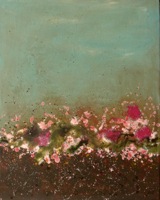Difference between revisions of "Potpourri"
(Created page with 'File:lighterstill.jpgright|frame ==Origin== French ''pot pourri'', literally, rotten pot *[http://en.wikipedia.org/wiki/18th_century 1749] The wo...') |
m (Text replacement - "http://" to "https://") |
||
| Line 3: | Line 3: | ||
==Origin== | ==Origin== | ||
French ''pot pourri'', [[literally]], rotten pot | French ''pot pourri'', [[literally]], rotten pot | ||
| − | *[ | + | *[https://en.wikipedia.org/wiki/18th_century 1749] |
| − | The word "potpourri" comes into [[English]] from the French word "pot-pourri." The French term has two connotations. It is the French name for a Spanish stew with a wide variety of ingredients called ''[ | + | The word "potpourri" comes into [[English]] from the French word "pot-pourri." The French term has two connotations. It is the French name for a Spanish stew with a wide variety of ingredients called ''[https://en.wikipedia.org/wiki/Olla_podrida olla podrida]'', specialty of the town of [https://en.wikipedia.org/wiki/Burgos Burgos]. The word was taken and copied by the French military during the Napoleonic occupation of Burgos (1808-1813). [[Literally]], however, the word "pot" in French has the same meaning as it does in Spanish and English, while the word "pourri" means rotten. In English, "potpourri" is often used to refer to any [[collection]] of miscellaneous or [[diverse]] items. |
==Definitions== | ==Definitions== | ||
*1: a mixture of flowers, herbs, and spices that is usually kept in a jar and used for [[scent]] | *1: a mixture of flowers, herbs, and spices that is usually kept in a jar and used for [[scent]] | ||
*2: a miscellaneous [[collection]] : medley <a potpourri of the best [[songs]] and sketches — Current Biography> | *2: a miscellaneous [[collection]] : medley <a potpourri of the best [[songs]] and sketches — Current Biography> | ||
==Description== | ==Description== | ||
| − | '''Potpourri''' is a mixture of dried, naturally [[fragrant]] [[plant]] material, used to provide a [[gentle]] natural [[scent]] inside buildings, most commonly in residential settings. It is usually placed in a decorative (often wooden) bowl, or tied in small [ | + | '''Potpourri''' is a mixture of dried, naturally [[fragrant]] [[plant]] material, used to provide a [[gentle]] natural [[scent]] inside buildings, most commonly in residential settings. It is usually placed in a decorative (often wooden) bowl, or tied in small [https://en.wikipedia.org/wiki/Sachet_(scented_bag) sachet] made from sheer fabric. |
| − | In early 17th Century France fresh herbs and flowers were gathered—starting in [[spring]] and continuing throughout the [[summer]]. The herbs were left for a day or two to become limp, then layered with coarse [ | + | In early 17th Century France fresh herbs and flowers were gathered—starting in [[spring]] and continuing throughout the [[summer]]. The herbs were left for a day or two to become limp, then layered with coarse [https://en.wikipedia.org/wiki/Sea_salt sea salt]. The aging mixture was stirred occasionally as layers were added to it. Often the mixture would ferment or even mold as the summer went by. In fall, spices would be added to the unsightly grey mix until a pleasant [[fragrance]] was achieved, then scent preserving fixatives were added. The finished ''potpourri'' was set out in special pots with perforated lids to perfume rooms. [[Modern]] [[homes]] avoid having pots of moldly substances laying about, and botanical potpourri can be acquired from a variety of retail establishments and online directly from countryside herb farms.[https://en.wikipedia.org/wiki/Potpourri] |
[[Category: General Reference]] | [[Category: General Reference]] | ||
Latest revision as of 02:35, 13 December 2020
Origin
French pot pourri, literally, rotten pot
The word "potpourri" comes into English from the French word "pot-pourri." The French term has two connotations. It is the French name for a Spanish stew with a wide variety of ingredients called olla podrida, specialty of the town of Burgos. The word was taken and copied by the French military during the Napoleonic occupation of Burgos (1808-1813). Literally, however, the word "pot" in French has the same meaning as it does in Spanish and English, while the word "pourri" means rotten. In English, "potpourri" is often used to refer to any collection of miscellaneous or diverse items.
Definitions
- 1: a mixture of flowers, herbs, and spices that is usually kept in a jar and used for scent
- 2: a miscellaneous collection : medley <a potpourri of the best songs and sketches — Current Biography>
Description
Potpourri is a mixture of dried, naturally fragrant plant material, used to provide a gentle natural scent inside buildings, most commonly in residential settings. It is usually placed in a decorative (often wooden) bowl, or tied in small sachet made from sheer fabric.
In early 17th Century France fresh herbs and flowers were gathered—starting in spring and continuing throughout the summer. The herbs were left for a day or two to become limp, then layered with coarse sea salt. The aging mixture was stirred occasionally as layers were added to it. Often the mixture would ferment or even mold as the summer went by. In fall, spices would be added to the unsightly grey mix until a pleasant fragrance was achieved, then scent preserving fixatives were added. The finished potpourri was set out in special pots with perforated lids to perfume rooms. Modern homes avoid having pots of moldly substances laying about, and botanical potpourri can be acquired from a variety of retail establishments and online directly from countryside herb farms.[1]
